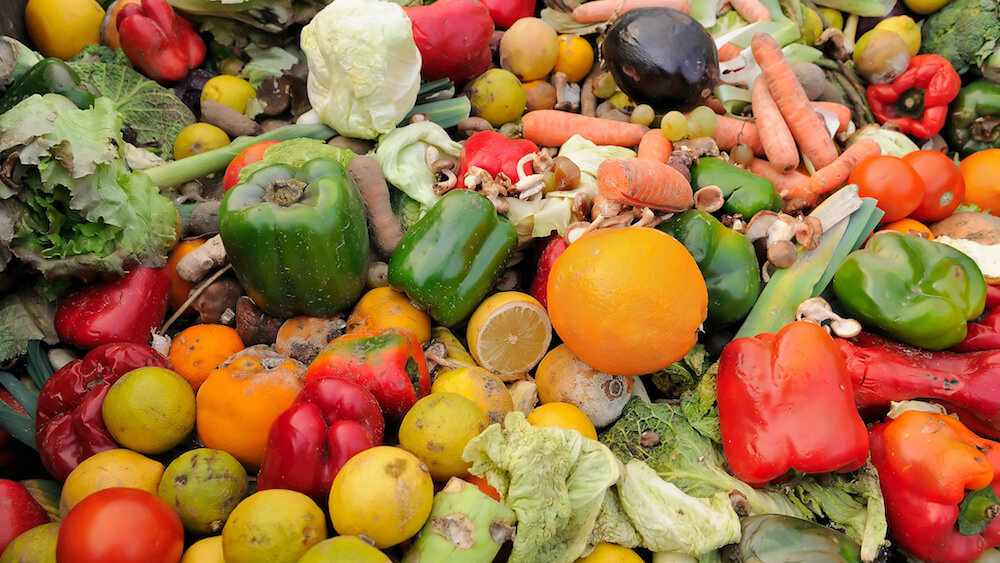
Food waste “is the inconvenient truth of event planning,” a planner told Convene. (Photo Credit Adobe Stock)
ReFED, a nonprofit focused on eliminating food waste in the U.S., has created a list of 27 cost-effective, scalable solutions, some of which address the biggest problems faced by meeting planners.
Every year, the U.S. wastes so much food — 63 million tons of it — that it’s the largest single material sent to the nation’s landfills. We spend $218 billion a year on food that is thrown away, while 40 million Americans are food insecure. It’s a huge problem, but a solvable one, Chris Cochran, ReFED’s executive director, wrote in the organization’s 2018 Annual Report. ReFED, which works collaboratively with a network of hundreds of stakeholders ranging from start-ups to large corporations, nonprofits, and government agencies, has distilled the 27 most cost-effective, scalable food-waste solutions into a list called “The ReFED Roadmap.”
Meeting professionals will recognize in the solutions some of the frustrations they’ve faced when trying to redirect excess food, including a lack of standardized food-donation regulations; difficulties in storing and distributing food at safe temperatures; and a lack of knowledge about food liability laws. The ReFED Roadmap proposes solutions to those hurdles and more.
Food waste “is the inconvenient truth of event planning,” a planner once told Convene. “We all know it’s happening. We don’t like it. But we don’t know how to address it.” Read on for some ideas from ReFED’s Roadmap. (For more, visit refed.com).
Prevention
1 Consumer Education Campaigns
Conducting advocacy campaigns to raise awareness and educate consumers about ways to save money and prevent wasted food.
2 Waste Tracking and Analytics
Providing restaurants and food service providers with data on wasteful practices to inform behavioral and operational changes.
3 Standardized Date Labeling
Standardizing food label dates, including eliminating visible “sell by” dates to reduce consumer confusion.
4 Produce Specifications (Imperfect Produce)
Accepting and integrating the sale of off-grade produce for use in foodservice and restaurant preparation and for retail sale.
5 Packaging Adjustments
Optimizing food packaging size and design to ensure complete consumption by consumers and avoid residual container waste.
6 Smaller Plates
Providing consumers with smaller plates in self-service, all-you-can-eat dining settings to reduce consumer waste.
7 Secondary Resellers
Businesses that purchase unwanted processed food and produce directly from manufacturers/distributors for discounted retail sale to consumers.
8 Trayless Dining
Eliminating tray dining in all-you-can-eat dining establishments to reduce consumer waste.
9 Spoilage Prevention Packaging
Using active intelligent packaging to prolong product freshness and slow down spoilage of perishable produce and meat.
10 Improved Inventory Management
Improvements in retail inventory management systems to track an average product’s remaining shelf-life and reduce days on hand.
11 Manufacturing Line Optimization
Targeting systemic and sporadic waste generation by optimizing equipment operating conditions, and addressing production line design flaws.
12 Cold Chain Management
Reducing product loss during shipment to retail distribution centers by using direct shipments and cold-chain-certified carriers.
Recovery
13 Donation Tax Incentives
Expanding federal tax benefits for food donations to all businesses and simplifying donation reporting for tax deductions.
14 Standardized Donation Regulation
Standardizing local and state health department regulations for safe handling and donation of food through federal policy.
15 Donation Matching Software
Using technology platforms to connect individual food donors with recipient organizations to reach smaller-scale food donations.
16 Donation Transportation
Providing small-scale transportation infrastructure for local recovery as well as long-haul transport capabilities.
17 Donation Storage and Handling
Expanding temperature-controlled food distribution infrastructure and labor availability to handle additional donation volumes.
18 Value-Added Processing
Extending the usable life of donated foods through processing methods such as making soups, sauces, etc.
19 Donation Liability Education
Educating potential food donors on donation liability laws.
Recycling
20 Centralized Composting
Transforming food from retail/ restaurants into compost at large-scale facilities to create economies of scale.
21 Centralized Anaerobic Digestion (AD)
A series of biological processes in which biodegradable material is broken down into biogas and digestate.
22 Water Resources Recovery Facility
With AD Delivering waste to a municipal water resources recovery facility (WRRF) where it is treated with anaerobic digestion and turned into a biosolid for beneficial application to land.
23 Commercial Greywater
Greywater aerobic digesters break down food organics into a soluble state, where it can be flushed into the sewage system.
24 Community Composting
Transforming food from homes into compost at small, community-level facilities.
25 Home Composting
Keeping a small bin for on-site waste at residential buildings to be managed locally.
26 Animal Feed
Feeding food waste to animals after it is heat-treated and dehydrated and either mixed with dry feed or directly fed.
27 In-Vessel Composting
Composting at small-scale at institutions or businesses with heat and mechanical power.
